Notes from the Rehearsal Studio: Learning the “Quartet for the End of Time”
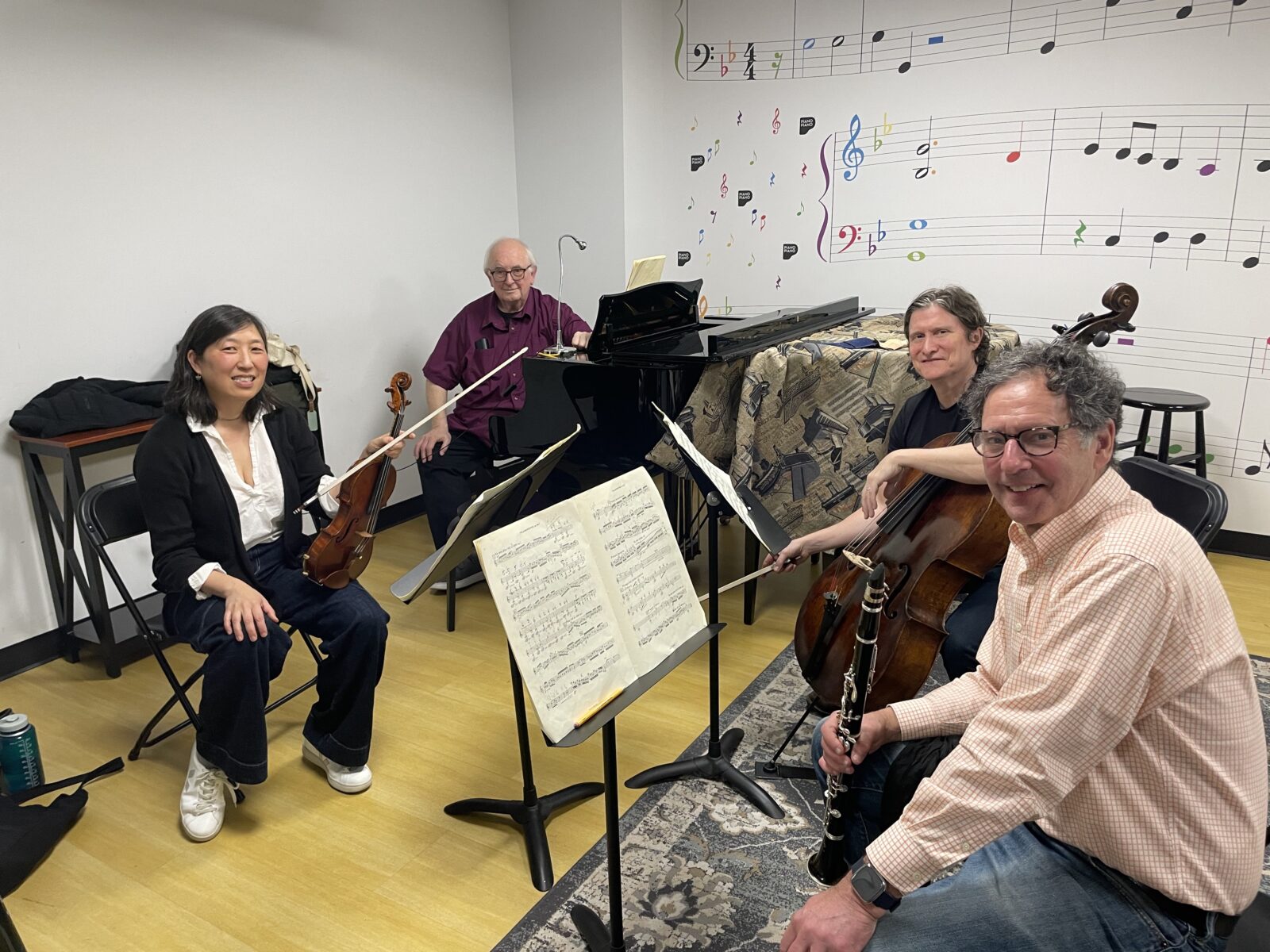
rehearsing the Quartet for the End of Time
Join ACMP this Sunday, April 7 for a live (and livestreamed) class with violinist and chamber music coach Calvin Wiersma on the first and sixth movements of Olivier Messiaen’s seminal work, the Quartet for the End of Time, with ACMP member musicians Yolanda Wu (violin), Kenneth Margolis (clarinet), Ben Pfeifer (cello) and Walter “Skip” Kennon (piano.)
Sunday, April 7, 3pm
Scholes Street Studio
375 Lorimer Street
Brooklyn, NY 11206
THE EVENT WILL ALSO BE LIVESTREAMED
LIVESTREAM LINK
FREE ADMISSION (voluntary donations are gratefully accepted – cash at the door or online.)
NO RESERVATIONS REQUIRED
In advance of this special event, I interviewed the four intrepid adult amateur musicians who took on this challenging piece. For the clarinetists, pianists, violinists and cellists among you, I hope you will be inspired to delve into Messiaen’s masterwork yourselves!
Interview with the Messiaen Musicians:
Yolanda Wu (violin), Ken Margolis (clarinet), Ben Pfeifer (cello) and Skip Kennon (piano)
Stephanie Griffin (ACMP): What inspired you to take on the project of learning Messiaen’s Quartet for the End of Time?
Ken: I first heard the work back in college and was immediately taken by its mystical qualities, the haunting verses of Revelation 10 describing the angel of the Apocalypse that inspired Messiaen (“the angel who raised his hand toward the sky and declared ‘there shall be time no longer’ ’’), and the unique circumstances (a German POW camp) in which it was composed and first performed. I have had a desire ever since to play it some day and now, 50 years later, thanks to ACMP connections, it happened!
Skip: I, too, heard it for the first time in college and was blown away by its highly chromatic harmonic language, sometimes feeling atonal, others ear-twistingly tonal. The rhythms in some movements are tremendously complex and very difficult to co-ordinate with each other. Some movement, the piano accompaniment is solemnly hypnotic with its rhythmic ostinatos.
Yolanda: I had heard of this piece but didn’t know it beyond having the vague impression that it is serious and difficult music. When Ken asked me to work on it, I was excited to take on a challenge and said yes immediately. It’s been such a worthwhile experience! Although my family wonders when they will no longer be subjected to hearing the piece with a loud clarinet playing one note. 😉
Ben: I was lucky enough to get roped into this project thanks to Yolanda!
Stephanie: Is this your first time tackling this work? If not – what were your prior experiences?
Skip: It is my first time. It is definitely not sight reading material! With complex chromatic harmonic cluster accompaniments and those ever changing rhythms, it is a musically difficult piece for the piano, actually for everyone. But technically for me, it is not so frightening most of the time.
Ken: My first time playing it, but I have heard some memorial live performances over the years, including by Tashi in 1974 and the Israeli Chamber Project in 2021.
Stephanie: What are some of the challenges this piece presents that differ from other chamber pieces you have played?
Yolanda: The rhythms in this piece are very challenging. You can’t count in regular meter so we are often subdividing in our heads with running sixteenth notes. Also, the instrumentation is unusual and there are challenges to sounding as one with piano, clarinet, cello and violin.
Ken: There are many, but most notably the rhythms. Some movements lack time signatures, perhaps suggestive of the theme of timeliness.
Ben: Prior to learning the piece and seeing the score, I had wrongly assumed that I was hearing interpretive decisions in the recordings I listened to. Some of it sounds downright free and ethereal. But this effect is actually a product of Messiaen’s unrelenting mathematical precision.
Stephanie: Are there any other chamber pieces you have studied or performed that prepared you well for some of the challenges of the Quartet for the End of Time?
Skip: I played Bartók’s Contrasts and some of his solo piano pieces. Some of Bartók’s complex rhythms and modal melodic writing seem present here, except this time often without time signatures.
Stephanie: What are the rewards you gain from delving into this piece that differ from other chamber pieces you played?
Ben: We are lucky as chamber musicians to have hundreds of years of repertoire to choose from. Studying and playing a modern composition like this gives you a perspective on all the music written before it in a visceral sense. It’s one thing to listen to or read about a challenging modern piece of music – it’s quite another to get it under your fingers.
Skip: Playing beautiful, exotic, exciting, spiritual and moving music that really is like no other composer’s work..
Stephanie: What are some of the most interesting things you learned while working on the Quartet for the End of Time that you can apply to your playing of other chamber pieces?
Yolanda: Putting this piece together is not all that different from other chamber pieces. As with all chamber pieces, listening to each other is really important for intonation and blending sound. And it’s good to study the score so that you know what everyone is doing (e.g. in the first movement when everyone is doing their own thing rhythmically but at moments someone else plays with you or has an important counter rhythm). In the unison movement (Dance of the Fury for the Seven Trumpets), it’s really important to have a leader and for everyone to share an internal pulse. We’ve had discussions about how to subdivide longer held notes and also have worked out groupings within sixteenth note passages so that they “make sense” and can be played better in unison.
Ben: It takes time for a clarinet to produce sound compared to a stringed instrument. The same is true comparing strings to the piano. Asking for strict rhythmic precision from an ensemble with all three is complicated. Learning this piece I found myself relying on visual cues even more than usual to stay together.
Stephanie: Why did you choose to work on the first and sixth movements for the class on April 7?
Ken: Only four of the eight movements are scored for all four instruments. The sixth movement, with the four instruments playing mostly in unison, with retrograde rhythms and dynamic ranges from pp to ffff, lives up to its title – Dance of Fury for the Seven Trumpets – and is in my view a highlight of the piece.
Skip: I was disappointed that we didn’t work on the other movements. The cello with piano sections are gorgeous long-lined beautiful melodies stretched over severely controlled piano ostinati. The very last movement, which is for violin and piano, is a gorgeous inexorable ascent to the heavens achieving musical ecstasy. Alas, for the piano, there is not much melodic material to play in the whole work. Messiaen took on the role of accompanist for three expert musicians.
Yolanda: It was really a question of logistics that we chose to work on two movements that we all play. Some of the most beautiful movements are scored for only two instruments. We just need more time to work on them!
Stephanie: Do you have any advice to offer other ACMP clarinetists, violinists, cellists or pianists who might be interested in learning this piece themselves?
Ken: Set aside enormous individual practice and rehearsal time and acquire a good metronome app.
Skip: The pianist should have a substantial reach. The massive (often delicate) chords lose their crystal character when you have to roll them (quickly arpeggiate them.) The solo clarinet movements require enormous breath control and a wide dynamic range without ever sounding like you’re forcing. All three instruments (not the piano) have tremendous intonation challenges. Luckily for me I don’t have to worry about that. As our coach, Cal, said, “The piano is always right.”
Ben: While it’s generally true in chamber music that you have to know each part to understand how you fit in, this piece absolutely demands it. I’d also say you’re going to need quite a bit of time to learn your part as initially just about every note feels unexpected. Oh and cellists should be prepared for a full embrace of false harmonics.
Yolanda: Learn your part well, listen to the piece, study the score, and you will be rewarded with a rich experience!
More Articles
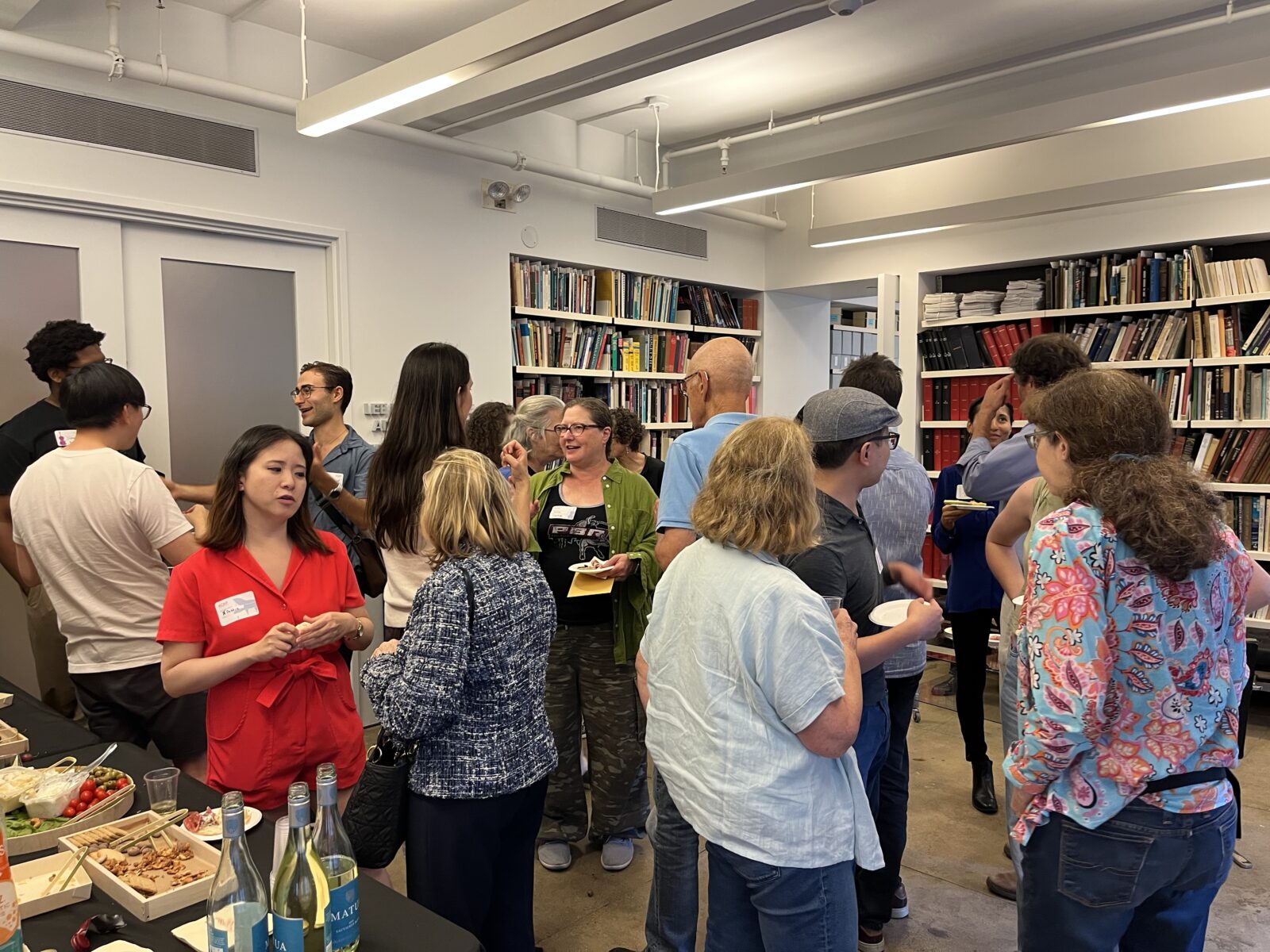
The Great American Play-In: ACMP and ACO
On Saturday, September 13 ACMP embarked on its first collaboration with the American Composers Orchestra (ACO). Together we organized a Play-In focused entirely on music by twentieth and twenty-first century American composers. Over the course of three hours, forty-five musicians discovered sixteen pieces or sets of pieces by a wide range of American composers, spanning from 1896 through 2025.Read More ↗
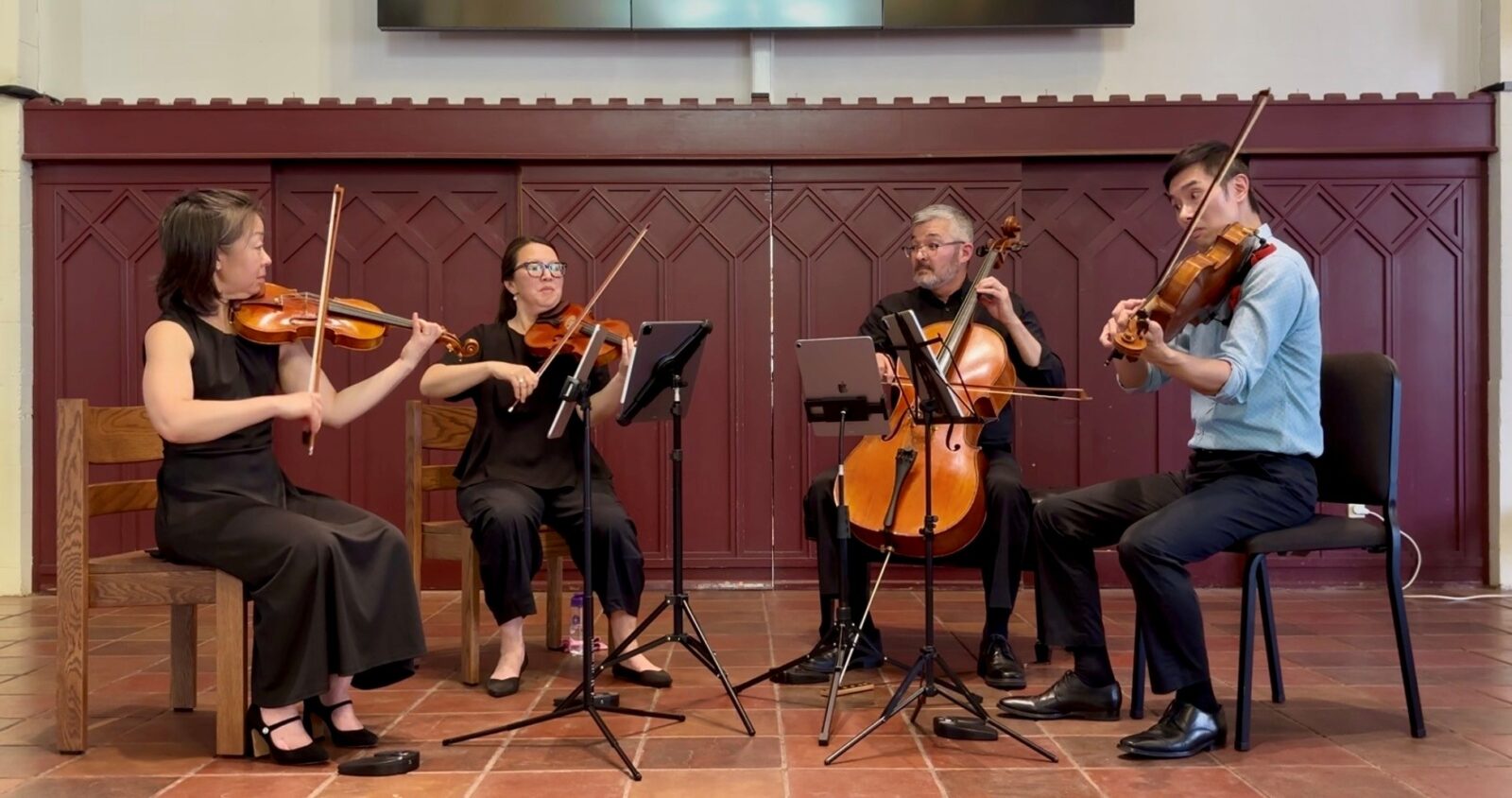
Just Play Concert: Exploring New Voices and Old Masters with the Tarka String Quartet
Thanks to a “Just Play” grant from ACMP, the Tarka String Quartet—Sue Soong and Julie Park on violin, Kevin Jim on viola, and Angus Davol on cello—recently shared a program in San Diego that reflected their passions: exploring new voices by women composers alongside the great works of the quartet tradition.Read More ↗
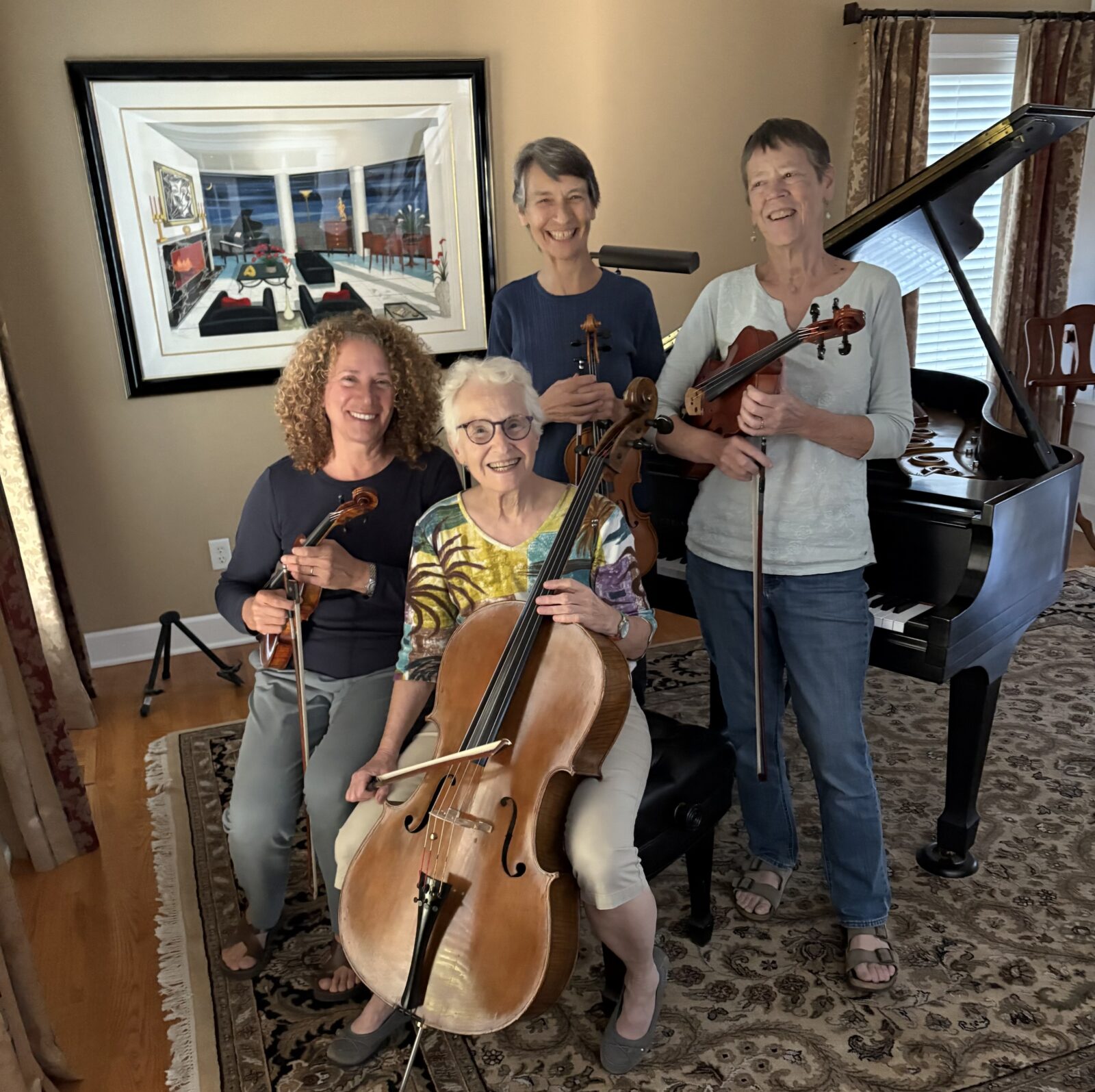
ACMP Members of the Month – October 2025
Playing in a regular string quartet is kind of like having a regular foursome in golf – everyone needs to be of roughly similar ability, and they also need to get along. When those two dynamics come together, the result can be a lasting chamber group that brings enduring friendships. Such is the case with our Members of the Month for October – Ruth Sklarsky, Barbara McIver, Ellen Henry and Kathy Lewis, residents of the Rochester, N.Y., area who have played in a string quartet for more than a decade. They got together and collectively answered a few questions about their musical journey.Read More ↗

ACMP Event: Meet Harumi Rhodes
Join ACMP’s Executive Director Stephanie Griffin on Saturday, November 1 at 2pm Eastern time for a lively discussion and Q and A with violinist Harumi Rhodes. Harumi is the daughter of two famous chamber musicians: Stephanie’s former viola teacher, Samuel Rhodes (Juilliard Quartet) and violinist Hiroko Yajima (Mannes Trio.) Find out more about Harumi’s early life in that celebrated chamber music milieu, and about her journey as she established her own career as the second violinist of the world-renowned Takács Quartet.Read More ↗
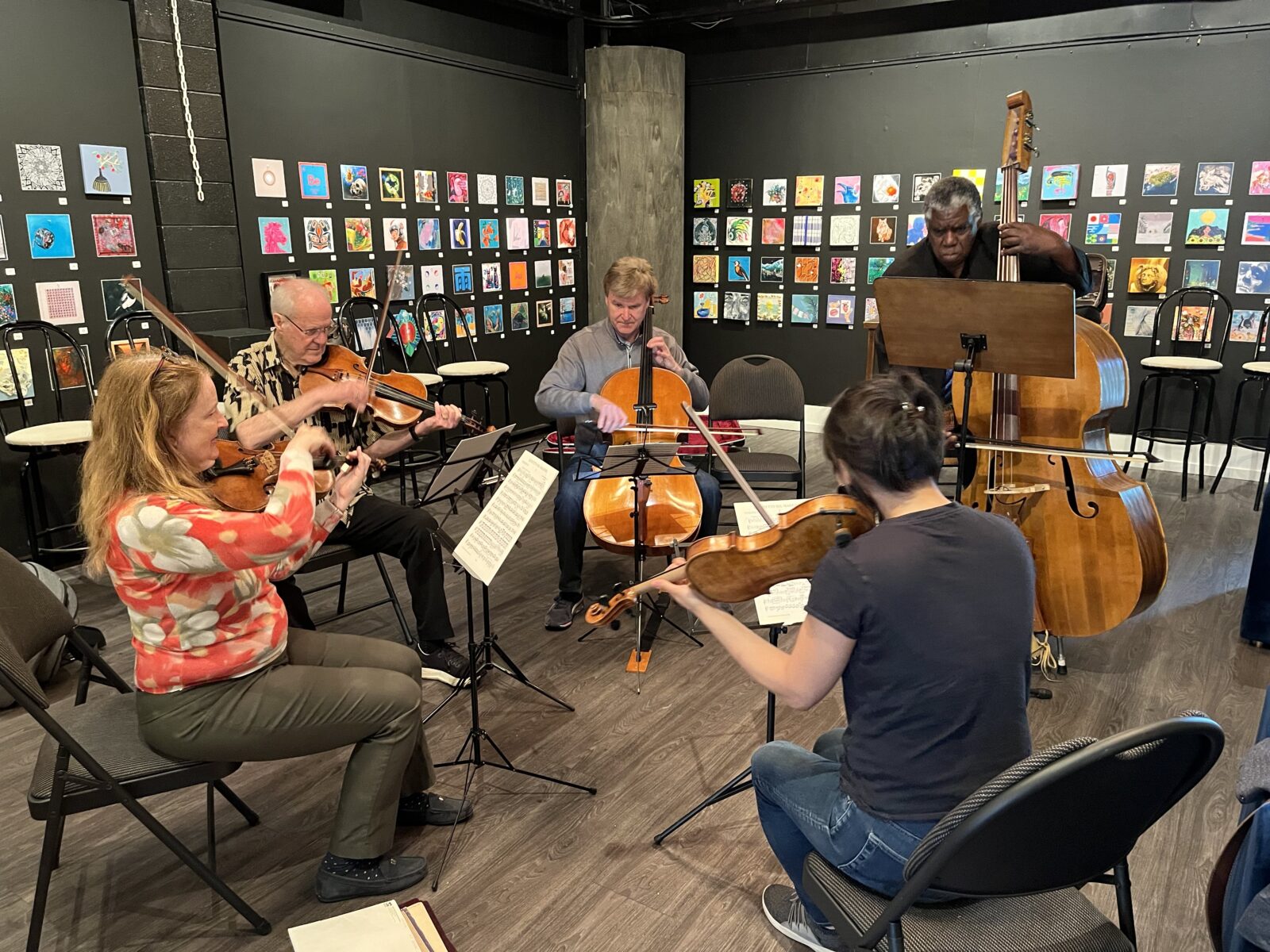
New guidelines for ACMP’s Workshop and Community Music Grant, deadline: October 24, 2025
ACMP's annual Chamber Music Workshop and Community Music grant cycle is open! Deadline: Friday, October 17. Read about the new guidelines and sign up for the Grant Information Session.Read More ↗

A weekend of music and renewal at Chautauqua
When you first set foot on the grounds of the Chautauqua Institution in southwestern New York, it’s easy to understand the lift in Arlene Hajinlian and Sonya Sutton’s voices when they speak about their summer homes, and why they would welcome a group of ACMP members for a weekend of music-making.Read More ↗
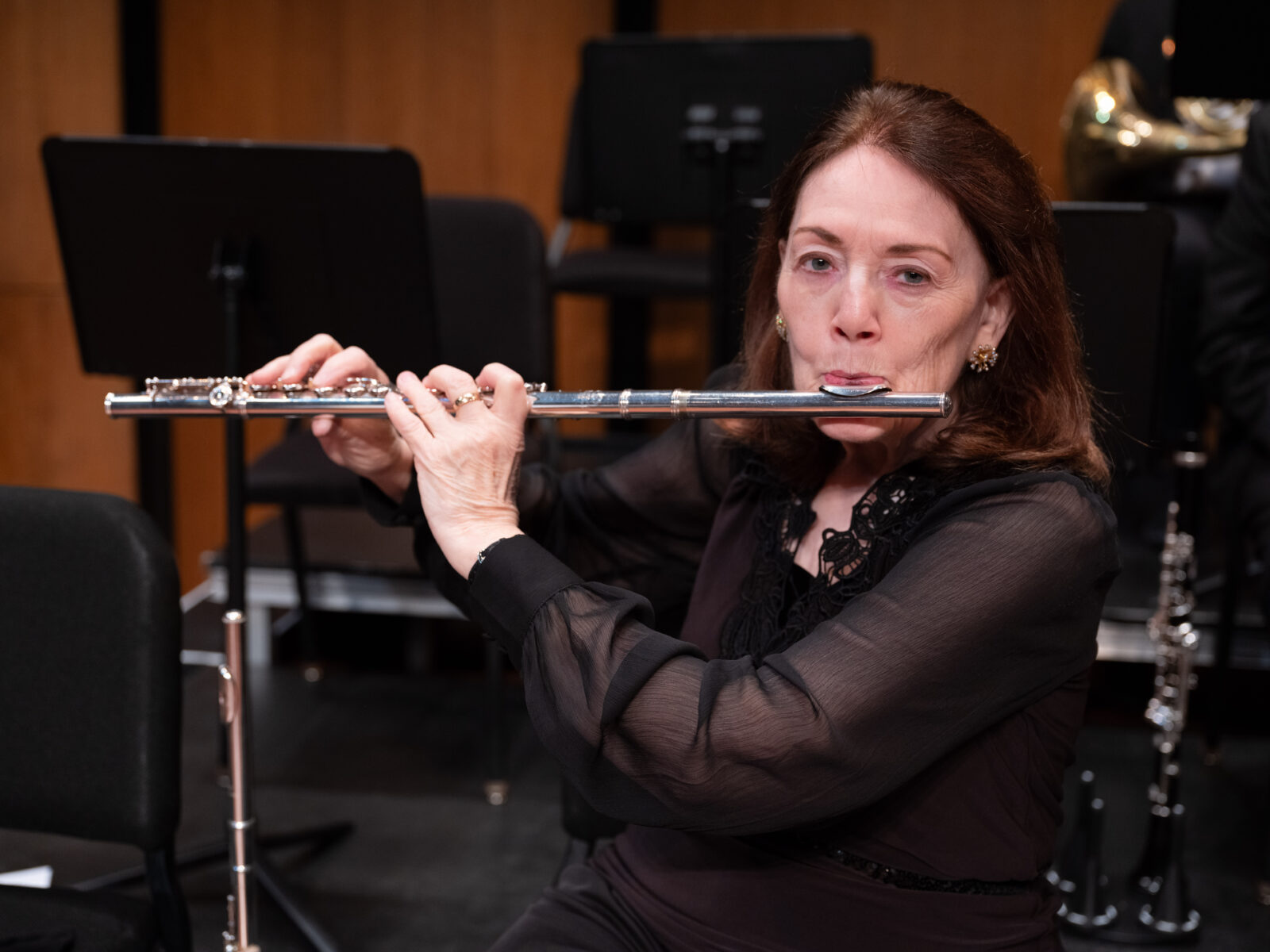
Optometrist by vocation, flutist by avocation
For someone who does not pay the rent as a musician, Pat Brown leads a full musical life with her flute. An optometrist by profession and a dedicated flutist, she has been a member of the Texas Medical Center Orchestra for more than 20 years, serving on the board and helping the group win national awards.Read More ↗
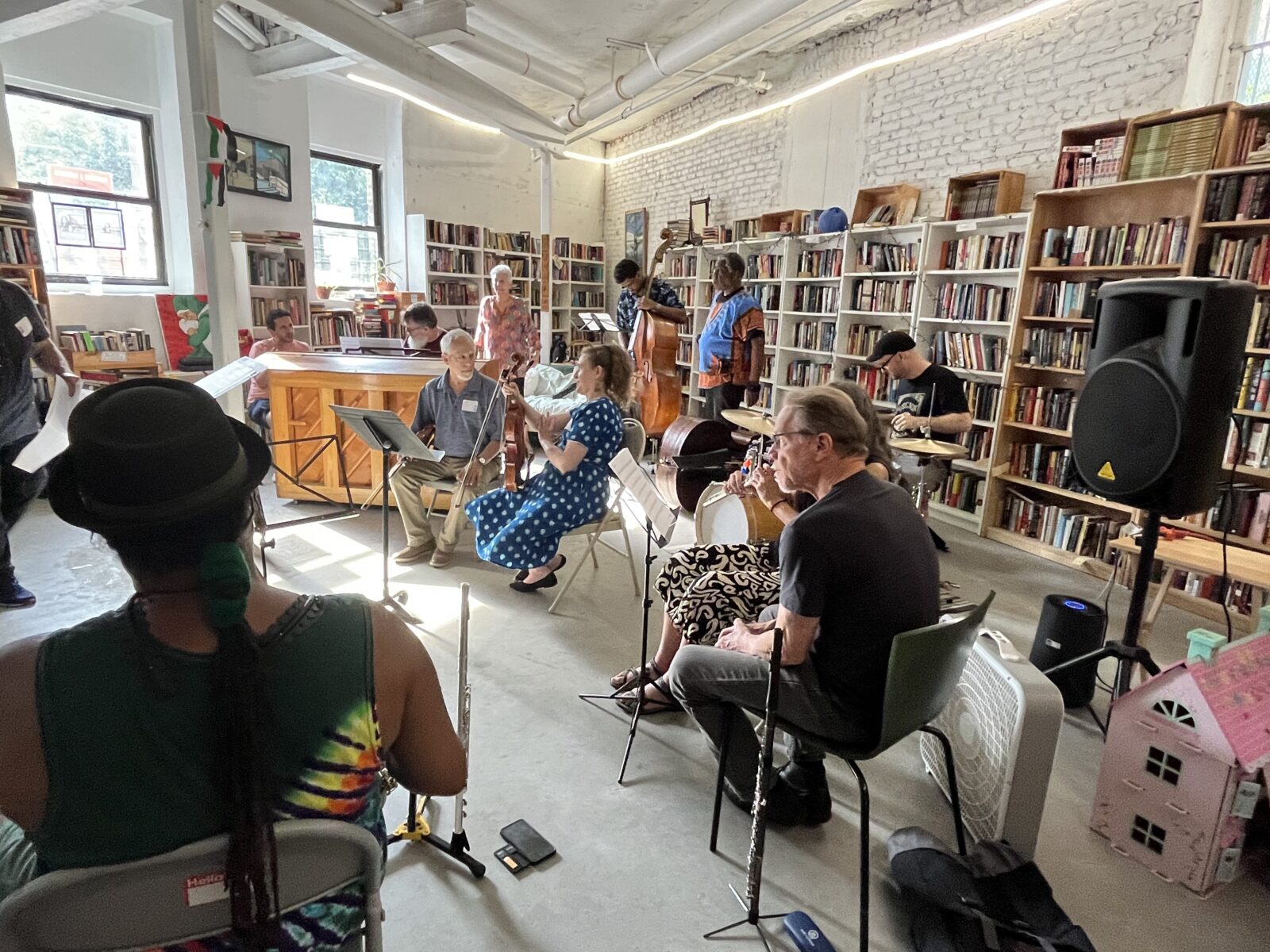
The Great American Play-In: Saturday, September 13 at Opera America
On Saturday, September 13 from 2 to 6pm, the American Composers Orchestra (ACO) and ACMP are hosting a fun and festive chamber music Play-In at Opera America (NYC), focused entirely on chamber music by twentieth-century and living American composers.Read More ↗

A professional pianist charts new musical paths with chamber music
When it comes to chamber music, ACMP pitches a big tent, from players just starting out to those rediscovering a passion for the music they played on their younger days. But ACMP’s membership also includes a thriving community of professionals — highly trained musicians who discover a community in ACMP that is hard to find elsewhere. Grace Shepard is one such professional living in South Florida and serving on ACMP’s North American Outreach Council.Read More ↗

How a cellist learned to love the viola, her way
Chicago-area cellist Ruth Rozen recounts her adventures with a vertical viola, opening the door to playing the inner voices in chamber music.Read More ↗
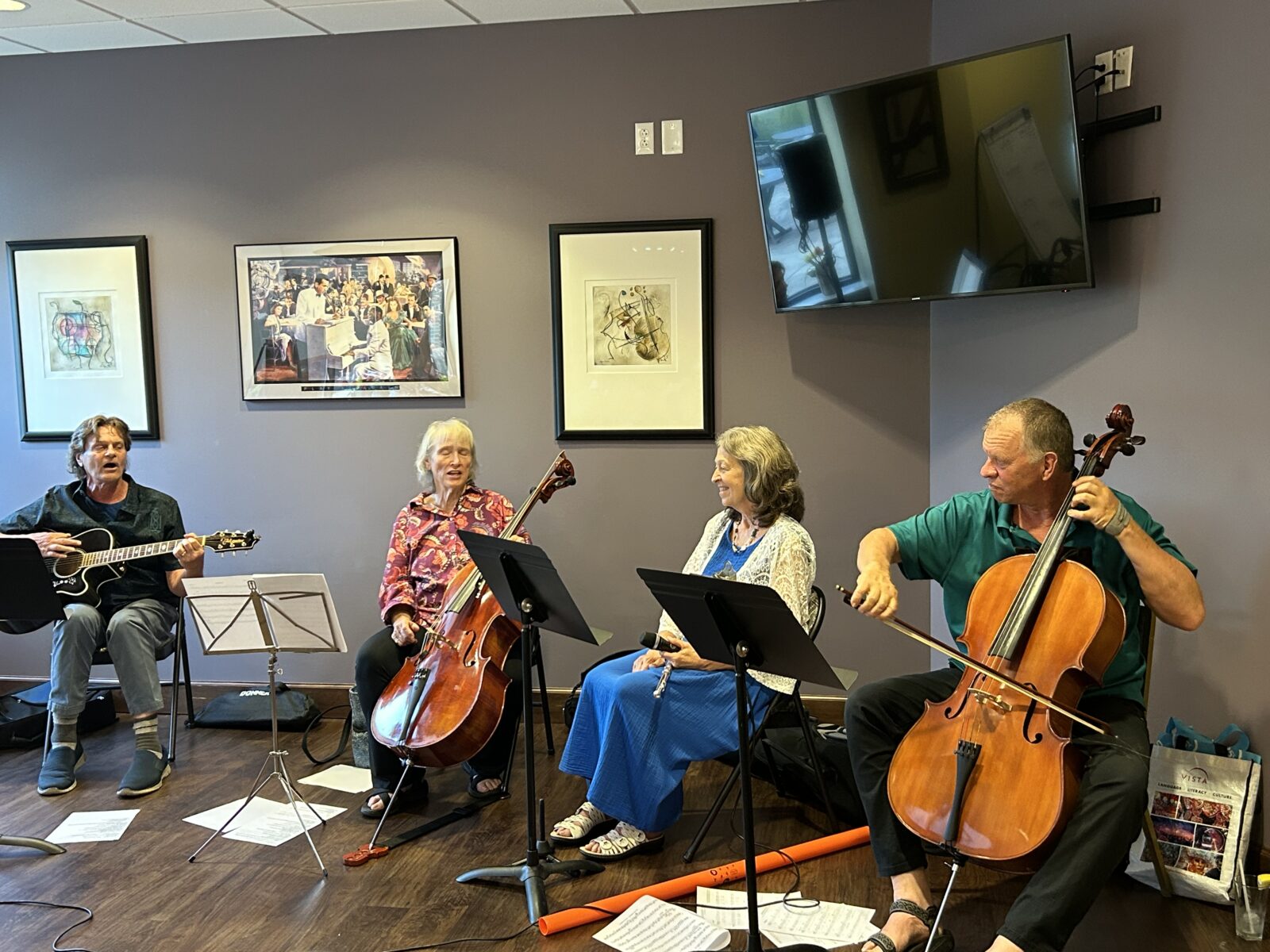
Tremendous Trivia Tunes: A Fundraiser for ACMP
Four members from DeKalb, Illinois tried a new method of fundraising for ACMP. They felt so grateful for ACMP's Home Coaching program and the wonderful teachers in our Coach Directory, that they came up with an innovative idea to give back to our community. They raised a little over $200.00, but the greatest part was how much fun they had doing it.Read More ↗

And the Play-Ins continued in June!
With ACMP's rapidly growing community of chamber musicians, Play-In season is never over! Read about two recent Play-Ins in June.Read More ↗
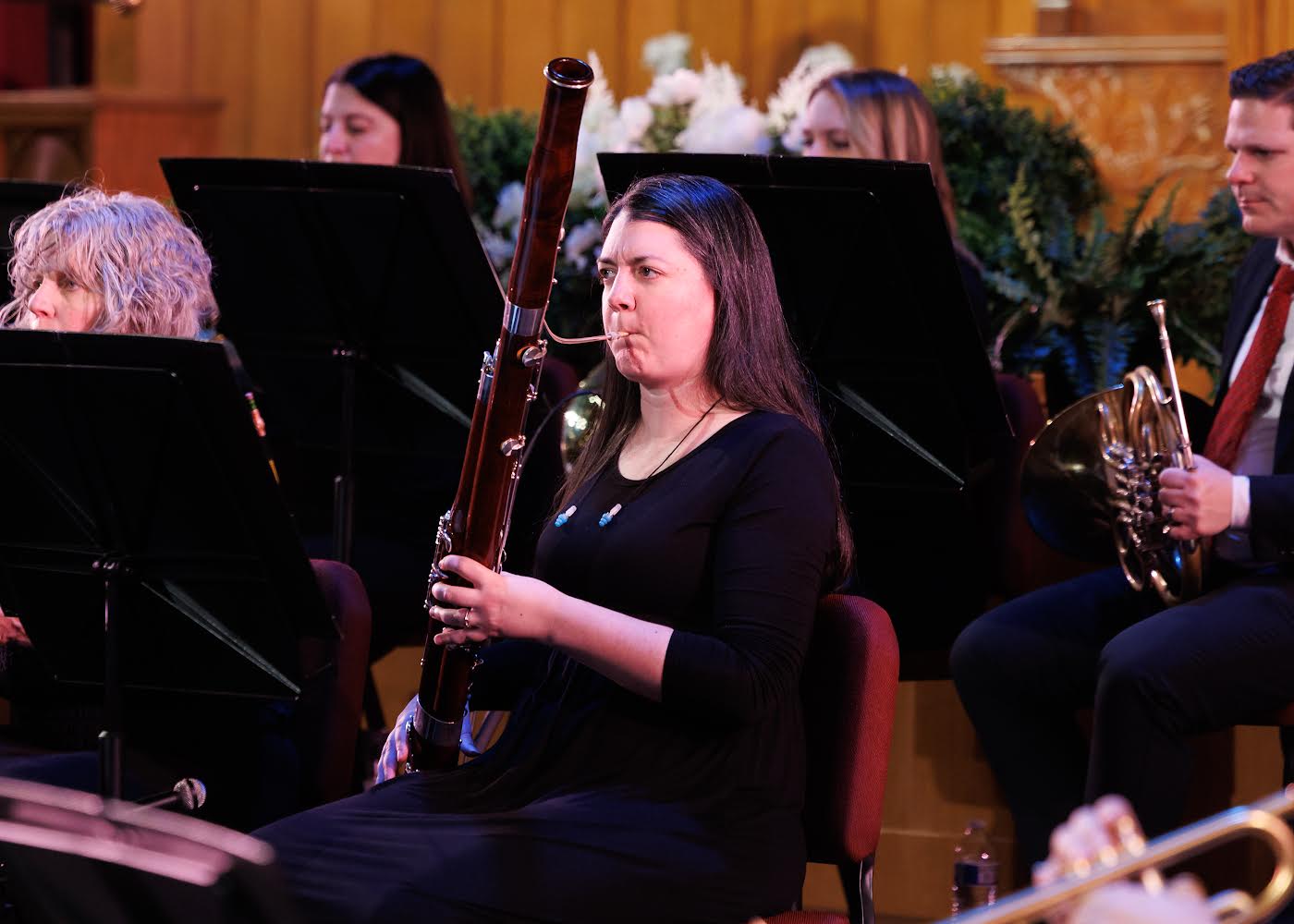
2025 News of Note Puzzle Contest Winner and Answers
Congratulations to bassoonist Jessi Vandagriff for winning this year's News of Note puzzle contest. And read more for the great puzzle answer reveal!Read More ↗
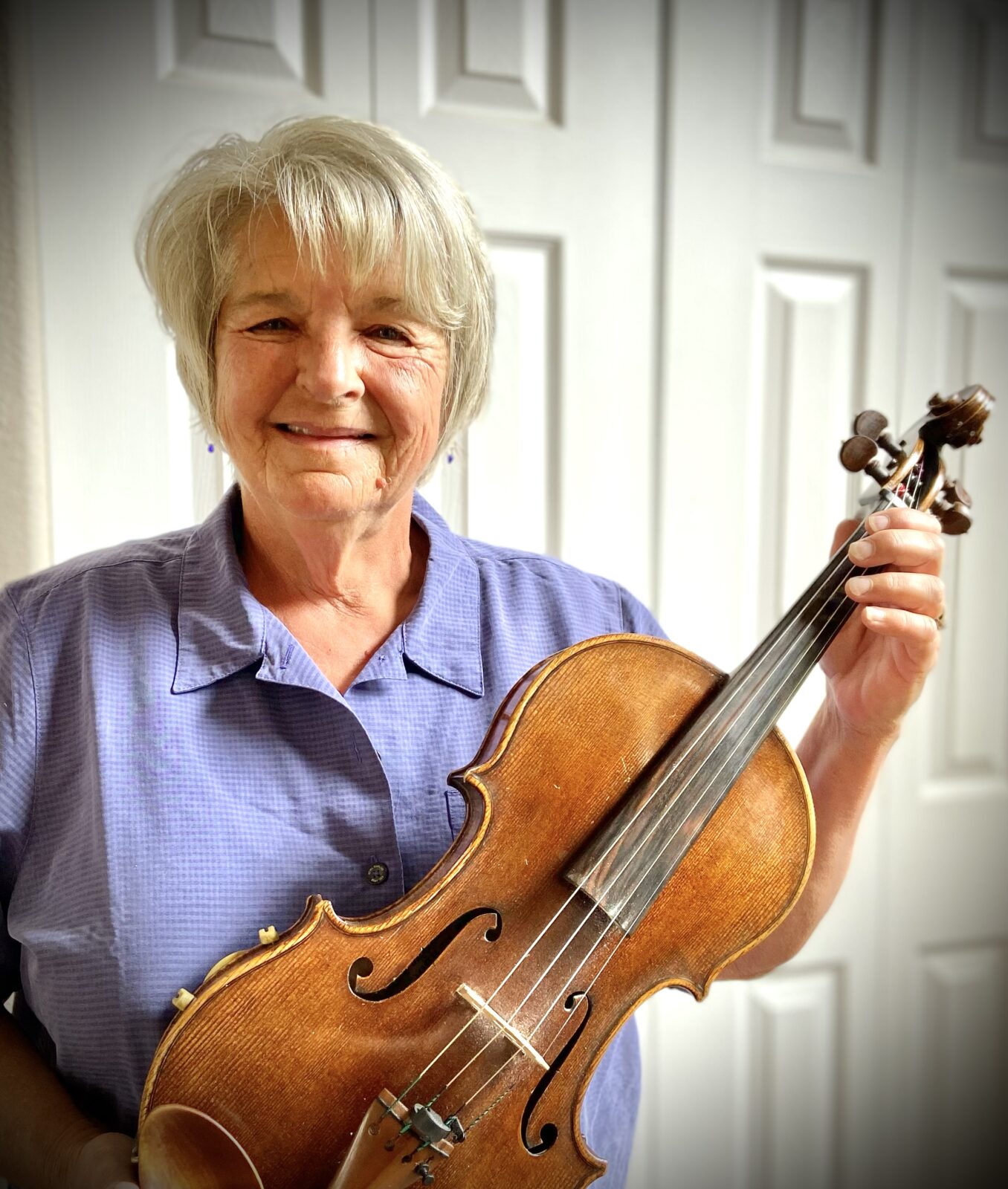
Member of the Month, July 2025: Cheryl Hite
The ranks of ACMP members are filled with professionals who began their college careers with the intent of pursuing music for a living, then for whatever reason moved into another career. Colorado-based violist Cheryl Hite is one of those musicians. A native of Detroit, she enrolled at Indiana University in the 1970s as a double major – biology and viola performance. Read her interview with ACMP Board Chair Bob Goetz.Read More ↗

The day my quartet played out of tune and almost got our host evicted
Chamber music can be a high stakes activity - play a bit out of tune, and your host could end up on the street. Read about one such close call in New York City.Read More ↗

News of Note 2025
It’s that time of year again! The web version of the 2025 News of Note is live, featuring updates from the past year—and some fun extras, including everyone’s favorite: a new puzzle. (Submit your answers by July 1!)Read More ↗
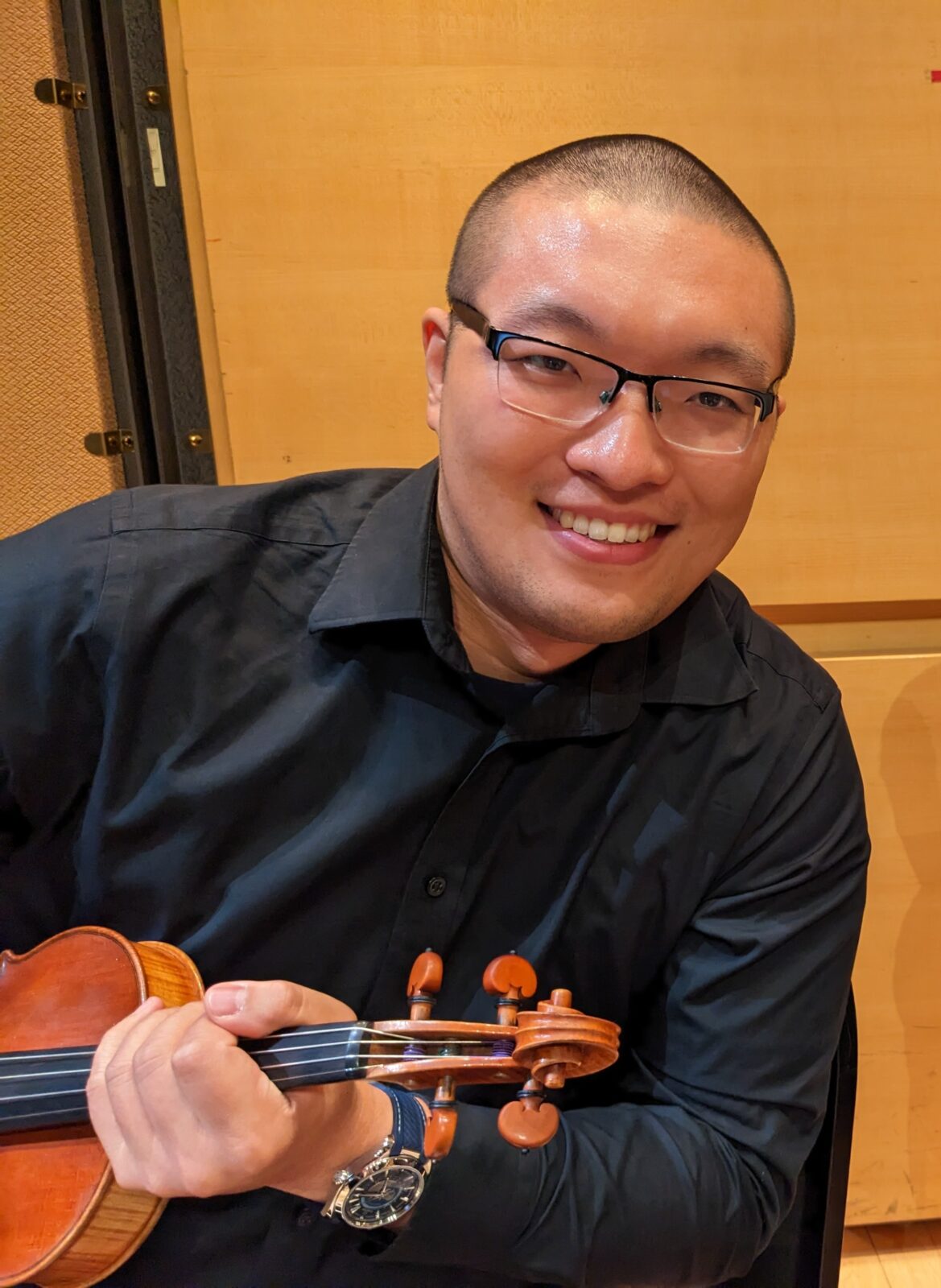
Member of the Month, June 2025: Frank Song
Frank Song, 28, may work remotely as a software engineer, but when it comes to music and the arts, he is all about being there, in person. With the flexibility to travel in his work, he seeks out concerts or museum exhibits in cities far beyond his home in Toronto. And while he’s at it, he takes along his violin to play chamber music. We caught up with Frank on a recent visit to New York, where he played chamber music with people he found through ACMP.Read More ↗

Seasoning for the Seasons
With a taste for adventure and a pinch of whimsy, follow ACMP cellist Tom Cappaert’s lead: stage a chamber concert in a Quito pizza parlor.Read More ↗

May 2025 Play-In Highlights!
Highlights from just a few Play-Ins during National Chamber Music Month!Read More ↗

Play-In Report: Berlin Kammermusik Liste
Michael Knoch runs the Berlin Kammermusik Liste, and represents ACMP as its International Ambassador in Germany. He holds at least two Play-Ins a year, and has a unique gift for organizing large Play-Ins with a mix of all instruments and voice. Read about his second Play-In of 2025!Read More ↗